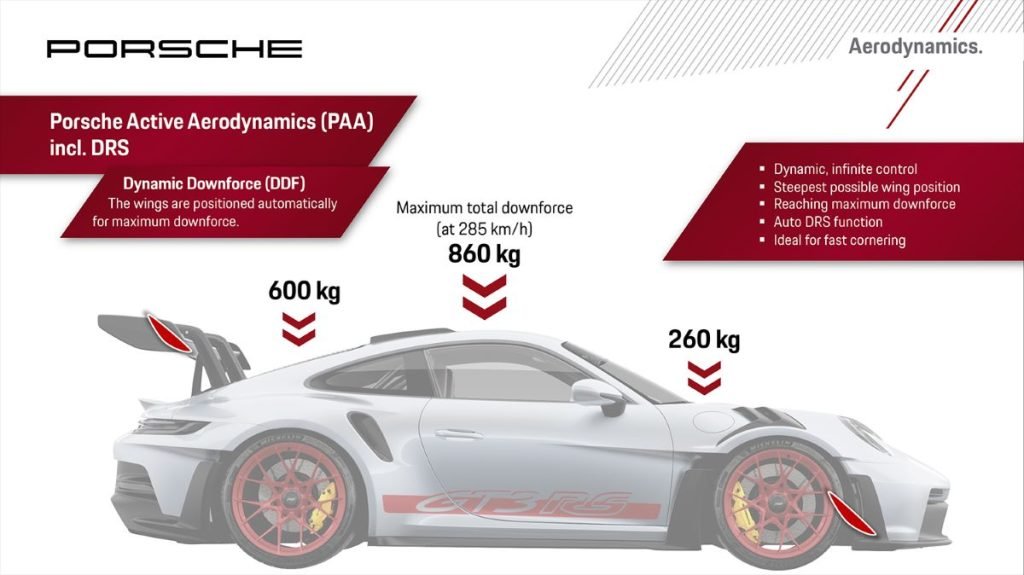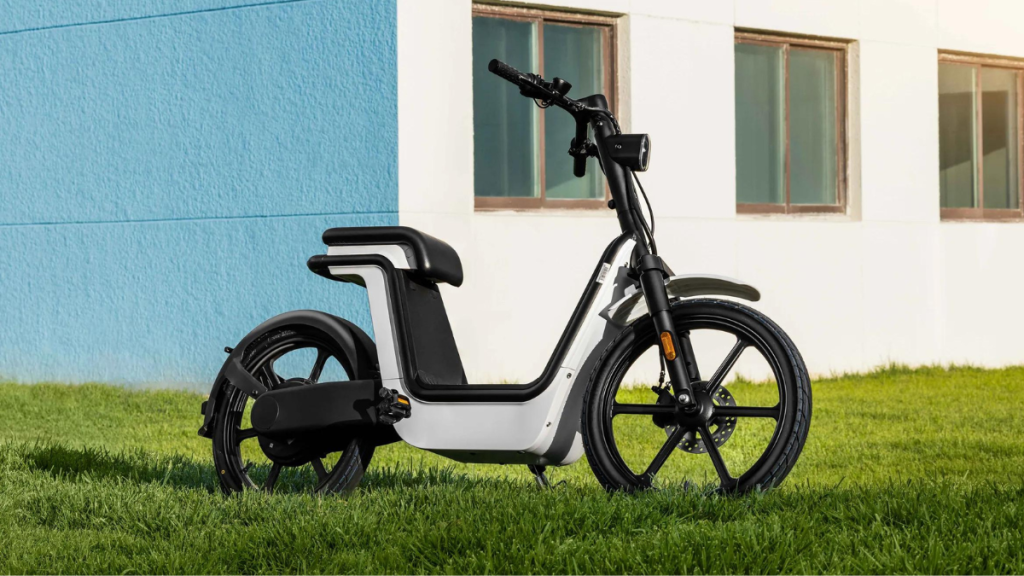
Porsche 911 GT3 RS
Are you a speed and performance enthusiast? If so, brace yourself because we’re about to dive deep into the thrilling world of the Porsche 911 GT3 RS. Get ready for a wild ride as we uncover the secrets behind this road-legal track monster that’s mastered the art of aerodynamics.
Mastering the Art of Downforce
Imagine yourself in the driver’s seat of a Porsche 911 GT3 RS, a machine meticulously crafted to cut through the air with ease. To truly appreciate its aerodynamic prowess, you need to grasp the numbers: 409 kg of downforce at 124 mph and a jaw-dropping 860 kg at 177 mph. These figures are nothing short of staggering, proclaiming loud and clear the victory in the aerodynamics arena.
But where does the magic start? Surprisingly, it kicks off under the hood. Most 911s have a rear trunk, but the Porsche 911 GT3 RS features a radiator in that space. Porsche borrowed this ingenious idea from their race cars, like the RSR and GT3 R, to make room for aerodynamic enhancements.
Active Aero Magic
The real enchantment happens at the front of the Porsche 911 GT3 RS. Those small light bars, once homes to radiators, now make way for an active aero system known as PAA (Porsche Active Aero). This nifty system includes movable flaps that lead into the front wheels, capable of pivoting over 80 degrees in just 0.3 seconds, delivering that extra punch of downforce. It’s like having a secret set of wings that spring into action precisely when you need them.

Moreover, these suspension arms are no ordinary components. They sport a wing-like profile, adding an additional 40 kg of downforce at high speeds, ensuring the Porsche 911 GT3 RS maintains an iron grip on the road.
Evacuating Air Pressure
When more air rushes into the front wheel arches, pressure builds up. Porsche tackled this challenge by enlarging the vents to efficiently release excess air. They also gave the door area a complete makeover, cutting it behind the tire. A vertical deflector was added to guide the air leaving the wheel arch down the side of the car, minimizing turbulence. A similar deflector can be found behind the rear wheels, further smoothing the airflow’s exit.
Underbody Aerodynamics
Beneath the Porsche 911 GT3 RS, there’s a whole symphony of vents and flicks at play. These components are there to guide airflow beneath the car, optimizing brake cooling and reducing underbody pressure. The result is enhanced stability and additional downforce, adding to the overall aerodynamic package.

Bonnet Matters
Hot air generated by the radiator rises through the mesh on the hood. However, the vanes within the mesh are designed to twist and direct the hot air sideways, rather than up and over the bonnet. This ensures that the engine receives a steady flow of cool air for peak performance. You’ll also notice a subtle bar on the roof, preventing the hot air from mingling with the engine’s much-needed cool intake.
Winged Perfection
The Porsche 911 GT3 RS comes equipped with a rear wing that might defy your expectations. It’s a swan-neck wing, meaning it hangs down from its supports rather than sitting on top. This innovative design maximizes downforce generation by optimizing the wing’s lower surface. In total, the wing area is a staggering 40% larger than its predecessor from the 991 generation.
Furthermore, the wing boasts an active function: a hydraulic piston for the DRS (Drag Reduction System). Activating this system opens the upper wing element, allowing air to pass through and reducing downforce by 30%. It can be manually operated via a button on the steering wheel or engage automatically under specific conditions, such as exceeding 62 mph and using at least 95% throttle.
Rear Diffuser and Beyond
The rear diffuser, similar to the GT3, plays a vital role in the GT3 RS’s aerodynamics. Given the 911’s rear-engine configuration, it can’t feature an extensive diffuser to generate downforce from negative pressure. This raises an intriguing question: Could a mid-engine 911, like the RSR racer, be the next step for Porsche’s pursuit of even greater downforce?
Sticking to the Tarmac
With all these elements working in harmony, the Porsche 911 GT3 RS is the epitome of staying glued to the tarmac, regardless of the circumstances. It’s a machine built to conquer both the road and the track, with aerodynamics playing a pivotal role in its performance. Just watch it glide through GotlandRing’s 106 mph jump – a mesmerizing sight that underscores the sheer power of aerodynamics.
In the world of high-performance vehicles, the GT3 RS stands as a testament to engineering excellence. It’s not just a car; it’s an aerodynamic masterpiece in motion. So, the next time you see this road-legal track star in action, remember the unseen forces of aerodynamics at play, keeping it firmly planted to the ground and making it a true marvel of modern engineering.
Conclusion
The Porsche 911 GT3 RS isn’t just a car; it’s a symphony of aerodynamics, working in harmony to provide incredible downforce, unmatched grip, and an exhilarating driving experience. It’s proof that when you’re intent on building a road-legal track car, aerodynamics is your most potent weapon, and the GT3 RS is the ultimate example of how to wield it to perfection. So, the next time you see one of these beasts roaring down the road, you’ll have a newfound appreciation for the invisible forces that make it such a formidable machine. It’s a car that not only takes you places but also takes your breath away.







